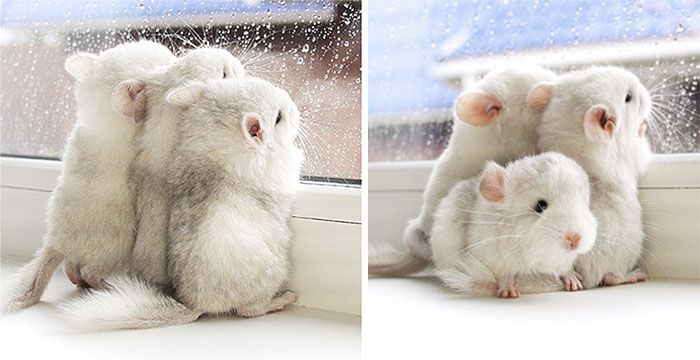Baby Chinchillas
|
The international trade in chinchilla fur goes back to the 16th century. Their fur is popular in the fur trade due to its extremely soft feel, which is caused by the sprouting of 60 hairs (on average) from each hair follicle. The color is usually very even, which makes it ideal for small garments or the lining of large garments, though some large garments can be made entirely from the fur. A single, full-length coat made from chinchilla fur may require as many as 150 pelts, as chinchillas are relatively small. Their use for fur led to the extinction of one species, and put serious pressure on the other two. Though it is illegal to hunt wild chinchillas, the wild animals are now on the verge of becoming extinct because of continued illegal hunting. Domesticated chinchillas are still bred for fur.
• As pets
Chinchillas are popular pets, but require much care. They should only be purchased by experienced pet owners who are aware of their needs. Chinchillas must have extensive exercise and dental care, due to their teeth continually growing all throughout their life span, and since they lack the ability to sweat, temperatures need to be carefully controlled. They should be kept in an environment of 60 to 70 °F (16 to 21 °C). Always locate their cage in a well-lit area, but do not place the cage in direct sunlight or in drafts.
The animals instinctively clean their fur by taking dust baths, in which they roll around in special dust made of fine pumice, a few times a week; they do not bathe in water. If they get wet they should be dried off immediately or else their fur will grow fungus and they can possibly get a skin infection. Their thick fur resists parasites, such as fleas, and reduces loose dander.
|
|















